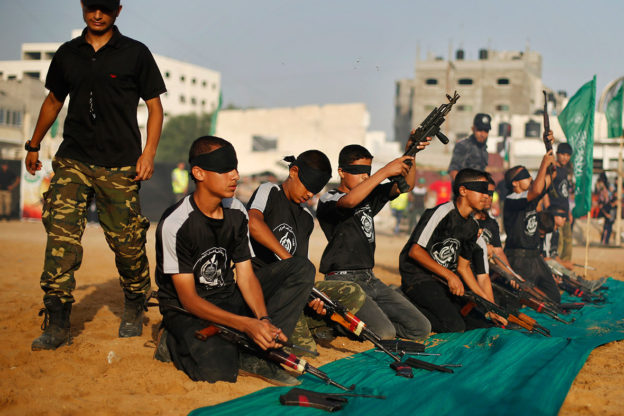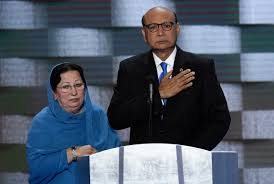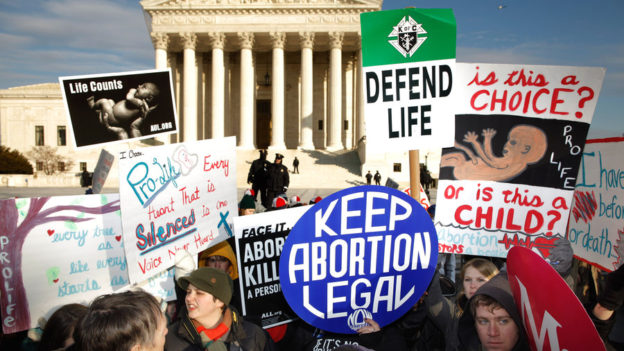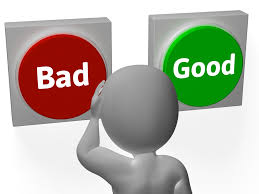There are all sorts of summer camps.


There are all sorts of summer camps.

What’s omitted from a discussion can sometimes speak quite loudly. And sometimes quite disturbingly. That’s true, I think, about the national conversation about the Khizr and Ghazala Khan/Donald Trump contretemps.
Unless you’ve been summering in the Australian outback and off the grid, you likely know that the most memorable moment of the Democratic National Convention (at least if the idea of a woman presidential nominee somehow didn’t make you swoon) was the speech delivered by the aforementioned Khizr Khan, a Pakistani-born, Harvard Law School-educated American citizen. Mr. Khan has worked in immigration and trade law, and founded a pro bono project to provide legal services for the families of soldiers. The Khans’ son, Humayun, an Army captain, was killed in 2004 while protecting his unit.
At the convention, Mr. Khan identified himself and his wife, who stood at his side, as “patriotic American Muslims,” and sharply condemned Donald Trump for what the Khans see as his bias against Muslims and divisive rhetoric. “You have sacrificed nothing,” he added, addressing Mr. Trump, “and no one.”
Mr. Trump, in subsequent interviews, responded to that accusation by arguing that he had raised money for veterans, created “tens of thousands of jobs, built great structures [and] had tremendous success.” And he also speculated that the reason Mrs. Khan hadn’t spoken was because, as a Muslim, “maybe she wasn’t allowed to have anything to say. You tell me.”
Mrs. Khan explained her reticence in a Washington Post essay. “Walking onto the convention stage, with a huge picture of my son behind me,” she wrote, “I could hardly control myself. What mother could?”
The punditsphere went wild, mostly with applause for the Khans and derision for Mr. Trump. There were the expected right-wing “exposés” of the Khans’ (nonexistent) connections to terrorist organizations, but the responsible responses to the showdown were critical of the Republican candidate and sympathetic to the Gold Star parents.
But while there is no reason to doubt Mrs. Khan’s claim that she was just too anguished by the memory of her son to speak, something that should have been considered somewhere in all the seeming millions of words that were produced on the row simply wasn’t.
That would be the possibility that a woman might choose, for religious reasons, to not avail herself of center stage and a microphone. All sides of the controversy seem to have agreed to the postulate that tznius is a sign of backwardness, or worse.
That was unarguably the upshot of Mr. Trump’s infelicitous insinuation, that Mrs. Khan’s silence at the convention was religious in nature, and evidence that Islam is intolerant and repressive.
To be sure, there are sizable parts of the Islamic world where women are in fact cruelly oppressed, where physical abuse, forced marriages and “honor killings” are unremarkable. But what Mr. Trump was demeaning was the very concept of different roles for men and for women, the thought that a woman might, as a matter of moral principle, wish to avoid being the focus of a public gathering. He was insinuating, in other words, that a traditional idea of modesty is somehow sinister.
Islam, though some Muslims may chafe at the observation, borrowed many attitudes and observances from the Jewish mesorah. Islam’s monotheism and avoidance of graven images, its insistence on circumcision, its requirement for prayer with a quorum and facing a particular direction, its practice of fasting, all point to the religion’s founder’s familiarity with the Jews of his time. As does that faith’s concept of tznius, even if, like some of its other borrowings, it might have been taken to an unnecessarily extreme level.
I don’t know the Khans’ level of Islamic observance, but Mrs. Khan wore a hijab as she stood next to her husband at the convention podium. So it is certainly plausible that her decision to not speak in that very public venue may have been, at least to a degree, informed by a tznius concern.
A concern that the plethora of pundits chose to not even consider, thereby, in effect, endorsing Mr. Trump’s bias on the matter.
To be sure, and most unfortunately, tznius isn’t an idea that garners much respect in contemporary western society. Moreover, Mr. Trump’s relationship with any sort of modesty is famously fraught.
But it is particularly disturbing that his insinuation that traditional roles for men and women bespeak repression and backwardness went missing in the national discussion, altogether unchallenged by the ostensibly open-minded men and women of the media.
© 2016 Hamodia

With the Democratic and Republican platforms offering more polarized planks on abortion than ever, the issue of “reproductive rights” is, once again, well, birthed into the glare.
Also in the limelight of late are some misleading assertions about Judaism’s attitude toward fetal life.
An op-ed of mine on the topic in Haaretz is here.
Or, to receive a copy of the piece, just request one, from rabbiavishafran42@gmail.com .

There is a social media page titled “Justice for Harambe,” Harambe being the gorilla that was shot to death in the Cincinnati Zoo after dragging around a 3-year-old boy who had slipped into its enclosure. The page’s description says it was created to “raise awareness of Harambe’s murder.” Within hours of its posting, the sentiment was endorsed by more than 41,000 people.
Over in the Netherlands, a woman in her 20s was recently cleared by the Dutch Euthanasia Commission for assisted suicide, because of “incurable post-traumatic-stress disorder” brought about by abuse she suffered as a child. Although she had experienced improvements after intensive therapy, the doctors judged her to be “totally competent” to end her life.
And Shavuos is coming.
That was not a non sequitur. Because the first day of Shavuos, zman mattan Torahseinu, falls on the first day of next week. Had the Tzaddukim and Baitusim been successful in their quest to fix the date of Shavuos, however, it would always fall on that day. Still confused about the connection?
It’s subtle but clear. During the Bayis Sheini era, those groups asserted that it would best serve people’s needs to have two consecutive days of rest and feasting: Shabbos and, immediately thereafter, Shavuos. (In Eretz Yisroel, of course, Shavuos is observed on a single day.) And so they advocated amending the mesorah.
Although they provided a textual “basis” for their innovation, the Gemara (Menachos 65b) explains that their real motivation was their sense of propriety – two days in a row of rest just seemed “right.”
But the mesorah states otherwise, that the phrase “mimochoras haShabbos” in the passuk that tells us when to begin counting Sefiras HaOmer, does not mean “the day after Shabbos,” but rather the day following the first day of Pesach. And so, Shavuos can fall on days other than Sunday.
The desire to supplant the mesorah with what “seems” to “enlightened minds” more appropriate appears to be a theme of Tzadduki-ism. The group also advocated a change in the Yom Kippur avodah, advocating that the ketores brought in the Kodesh Kodashim be set alight before the kohen’s entry into the room, rather than afterward, as the mesorah teaches.
Although here, too, they mustered scriptural “support,” the Tzadukim were in fact motivated, the Gemara explains, by “what seemed right.” To wit, they argued, “Does one bring raw food to a mortal king and then cook it before him? One brings it in already hot and steaming!”
In both the date of Shavuos and the avodas Yom Kippur, the mesorah was defended assiduously by the Perushim, the champions of the Torah Sheb’al Peh. The Tzaduki mindset, however and unfortunately, lives on.
The perceiving of animals as equals to humans – based on the perception of humans as mere animals – seems “right” to many. The celebrated philosopher Peter Singer famously contended that “The life of a newborn is of less value than the life of a pig, a dog or a chimpanzee.”
That same outlook sees the ending of an adult human life as a simple matter of “choice,” to be exercised by an individual as he or she sees fit. Professor Singer has in fact advocated the killing of the severely disabled and unconscious elderly.
Such placing of mortal etiquette – “what seems right” – above the received truths of the Torah stands in precise opposition to the message of Shavuos, when our forebears declared “Naaseh v’nishma” – “We will do and we will hear.”
That is the quintessential Jewish credo, the acceptance of Hashem’s will even amid a lack of our own “hearing,” or understanding. “We will do Your will,” our ancestors pledged, “even if it is not our own will, even if we feel we might have a ‘better idea’.” Call it a declaration of dependence – of our trust in Hashem’s judgment over our own.
And so, as we approach Shavuos amid a marketplace-of-ideas maelstrom of “ethical” and “moral” opinions concerning myriad contemporary issues – not only in the larger world but even in the Jewish community, even in groups calling themselves “Orthodox” – we do well to pause and reflect on the fact that our mandate is not to “decide” what seems right to us, but to search, honestly and objectively, for the guidance of our mesorah.
When we choose to do that, with sincerity and determination, in our personal lives and our communal ones alike, we echo our ancestors’ words at Har Sinai, declaring, as did they, that man is not the arbiter of right and wrong; our Creator is.
© 2016 Hamodia

My employer, Agudath Israel of America, as a non-profit organization, is not permitted to endorse any candidate for public office. I, however, write this column each week as an individual, not as an organizational representative. Even so, though, I take no public position on the presidential race.
Aspects of the race, though, do strike me as worthy of consideration.
Like a recent radio interview with Donald Trump. Among the candidate’s many interesting comments over the course of the campaign so far was his assertion last summer that Senator John McCain was “not a war hero.”
This, despite Mr. McCain’s having flown missions during the Vietnam war, having been shot down, seriously injured and captured by the North Vietnamese, having endured torture and languished as a prisoner of war for six years (two of them in solitary confinement) and having refused an out-of-sequence early repatriation offer. Still, said Mr. Trump, Mr. McCain wasn’t “like people who weren’t captured.”
For his part, Senator McCain recently reiterated that he didn’t take the candidate’s comment personally, but he did, he said, object to the insinuation that other POWs were something less than heroic for their endurance of their own captures and imprisonments. “What [Mr. Trump] said about me, John McCain, that’s fine,” said the senator. “I don’t require any repair of that.”
“But,” he continued, “I would like to see him retract [his] statement, not about me, but about the others.”
During a May 11 radio interview, Mr. Trump had the opportunity to do just that, and took it. Well, sort of. At least for a few seconds, before he cast doubt on what he had just said.
Asked about Senator McCain’s wish for a retraction, the presidential hopeful told his interviewer, “Well, I’ve actually done that.” And, to make thing clear (at least for the moment), he added, “You know frankly, I like John McCain, and John McCain is a hero.”
The interviewer, seeking clarity, asked if that meant that Mr. Trump then regretted his earlier comments. The response: “I don’t, you know… I like not to regret anything…. And what I said, frankly, is what I said. And, you know, some people like what I said, if you want to know the truth. Many people that like what I said. You know after I said that, my poll numbers went up seven points.”
One wonders who was converted to the Trump candidacy as a result of his demeaning of Senator McCain’s experiences. (Does some sizable number of unrepentant former North Vietnamese lurk within the American electorate?) But, be that as it may, Mr. Trump’s bewildering backtrack was a striking contrast to an American official’s unqualified expression of regret a few weeks earlier.
Gen. John W. Nicholson Jr., the commander of American and NATO forces in Afghanistan, traveled to Kunduz, Afghanistan to issue an unreserved apology to the families of victims of the United States’ bombing of a hospital in that city last year that killed 42 people.
“As commander, I wanted to come to Kunduz personally and stand before the families and the people of Kunduz to deeply apologize for the events which destroyed the hospital and caused the deaths of staff, patients and family members,” he said. “I grieve with you for your loss and suffering, and humbly and respectfully ask for your forgiveness.”
Shortly after the mistaken bombing, President Obama also personally apologized for the carnage in Kundu.
The general and the president likely wish that they didn’t need “to regret anything,” no less than Mr. Trump. But when regret is called for, they feel and express it.
No reader of this periodical needs to be reminded of the fact that feeling regret is a high Jewish ideal, the very fundament of teshuvah. Many of us recite Viduy twice daily, and all of us on Yom Kippur. Regretting a wrongdoing is something for which our illustrious forebears Yehudah and Reuvein are praised, and for which they “inherited life in the next world” and were rewarded as well in this one (Sotah, 7b).
Whether the willingness to feel and express remorse is something desirable in an American president or something that will hinder him in dealing with the challenges of his office is, one supposes, an open question. And how the American electorate feels about the matter is a question open even more widely.
But that, as Jews, we are enjoined to see regret, when it is indicated, as a desideratum, not a weakness, is no question at all.
© 2016 Hamodia

The saintly aura that has enveloped Ronald Reagan in the minds of many who consider themselves social conservatives and independent thinkers – and I count myself among them; and I voted for Reagan in both 1980 and 1984 – has eclipsed the memory of his infamous 1985 visit to the military cemetery in Bitburg, Germany. Elie Wiesel famously told Mr. Reagan, “That place, Mr. President, is not your place.”
Bitburg comes to mind in the wake of the announcement that President Obama will be visiting Peace Memorial Park in Hiroshima, Japan, more than 70 years after the United States dropped an atomic bomb on the city – and then, three days later, another, on Nagasaki – killing upward of 200,000 people and leaving unknown numbers with illnesses born of radiation exposure. Mr. Obama will be the first sitting president to visit the site, and is being criticized by some for his plan to do so.
The wisdom, propriety and necessity of President Harry Truman’s decision to unleash nuclear destruction on the Japanese cities on August 6 and August 9, 1945 have been debated for decades. Japan had attacked the U.S. first, at Pearl Harbor, had starved, beaten and executed American prisoners of war and seemed undeterred by Germany’s May 7 surrender to the Allies.
Truman maintained that the bombings, by accelerating the Japanese surrender, saved countless American lives. “The Japanese began the war from the air at Pearl Harbor,” he proclaimed. “They have been repaid many fold.” And the bombings had been ordered “in order to shorten the agony of war, in order to save the lives of thousands and thousands of young Americans.”
Some historians, however, have judged these decisions harshly, maintaining that there were other paths toward Japanese surrender, and that the loss of life at Hiroshima and Nagasaki was unconscionable.
For its part, the White House has stressed that the visit is not intended as an apology, but rather is a symbolic gesture to promote Mr. Obama’s nuclear nonproliferation message and highlight the reconciliation between wartime enemies that are now close allies.
Nonetheless, knee-jerk Obama-bashers and knee-jerk “progressives” alike have registered their respective disgruntlements. The former have long characterized the president’s acknowledgments of U.S. misjudgments as unwarranted and unpatriotic apologies; they claim that the president’s very presence at the site is an unspoken expression of regret. And the latter believe that the U.S. in fact does owe Japan an unqualified and open mea culpa for the bombings.
Thus, “The Obama Administration Is Now Apologizing For America Winning World War II” reads the title of an opinion piece by David Harsanyi, a senior editor at The Federalist. And “America’s enduring Hiroshima shame: Why Barack Obama should apologize for the atomic bomb — but won’t” is the title of an essay by syndicated columnist Jack Mirkinson.
The guy in the Oval Office just can’t win.
Lost, though, in the political discussion of the impending visit – as is so often lost in so many political discussions – is reason. Not every expression of pain is a confession of guilt. One can regret the effects of an act without regretting the act.
I don’t know if pediatricians apologize to toddlers for the pain they have inflicted on them after a required inoculation. But I can certainly imagine a sensitive doctor acknowledging his small patient’s pain, including his role in creating it, while seeking to soothe the child.
Is the Commander in Chief of the United States visiting Hiroshima really much different? Even if the optics indicate something more than a celebration of how far U.S-Japan relations have come over the past half-century, even if Mr. Obama’s presence at the site is seen as an expression of anguish at the great loss of life caused by our country’s nuclear attacks on Japan, even if one believes that President Truman was entirely right in his decisions, is it somehow un-American or reckless to be perceived as pained by the incineration of two cities’ populations?
Elie Wiesel was right about Bitburg. It was not, and is not, a place for an American president. It is a cemetery for a military that fought to advance the cause of an evil regime. But, even if the Japanese regime was contemptible too, those who perished in Hiroshima and Nagasaki were civilians.
Words from the end of Sefer Yonah come to mind:
“Now should I not take pity on Nineveh, the great city, in which there are many more than one hundred twenty thousand people who do not know their right hand from their left, and many animals as well?”
© 2016 Hamodia

Sitting among other commuters in the cavernous terminal, waiting for the next ferry from Staten Island to Manhattan, I sensed some commotion in my periphery. Looking up from my reading, I saw a 40-ish man struggling against several ferry terminal employees, who were trying to get him to exit the room.
Homeless people regularly spend time in the ferry terminal, as they do in other transportation hubs in New York and elsewhere. They’re often sleeping, and taking up seats with their bodies and their belongings. It’s easy to feel resentful toward them, especially if there are no other seats available. Until, that is, one thinks about the fact that the large bags of sundry items they lug around and park nearby represent all that they own in the world. And that their only options for getting rest or staying warm in the winter – other than to subject themselves to crime-ridden public shelters – is to bed down in train, bus or ferry terminals.
Although he wasn’t one of the “regulars,” the fellow who had just entered the room clearly belonged to the fraternity of people with no place to call home. He was laughing and moving somewhat animatedly as the ferry terminal personnel, who seemed to know him, gently escorted him out of the room. “C’mon, Jerry,” one large uniformed fellow cajoled him, “Let’s go.”
“No, no,” the homeless man replied, and looked around the room. “I just want to talk to… the rabbi!”
That would be me, of course. Oy.
“No, you don’t, Jerry,” Mr. Burly said with a loud laugh. “You leave the rabbi alone!”
“Just for a minute,” Jerry pleaded, and, releasing himself from his captor’s grip, he ambled over and introduced himself. “Sholom aleichem, rabbi! I’m Yosef Shmuel ben Aharon!”
I would never have guessed the fellow was a relative. “Pleased to meet you,” I replied, smiling, and hoping my discomfort didn’t show.
“Would you happen to have a spare yarmulke on you, by any chance?” he asked.
I was taken aback by the unexpected request. “I’m so sorry,” I replied. “I don’t.” Which was true, but, after he thanked me all the same and was led out of the room, I felt ashamed. I was wearing a yarmulke under my hat, after all. Couldn’t I have given it to him and worn my hat at work? It might have looked a little strange as I moved my morning coffee from the kitchen to my desk, but it would not have eternally stigmatized me.
That entire day, my response to the homeless man bothered me. Actually, at night, too.
The next day, I put a spare yarmulke in my pocket, just in case Jerry might be at the terminal again. I had never seen him before, so I wasn’t optimistic. But when I arrived, there he was, sitting quietly in one of the waiting-area seats. He didn’t see me and I just watched him from afar. When the call came for passengers to board the ferry, though, I went over to him and offered him the yarmulke.
His eyes opened wider than I imagined possible. He took the yarmulke, leaped to his feet and practically shouted “Thank you so much!”
“My pleasure,” I said, and rushed to make it to the boat before the doors closed.
So many bein adam lachaveiro mistakes in life are not easily correctable, so I was grateful for the opportunity to undo one of my bad judgments. And yet I worried, too, that I may have made a friend who would come to occupy more of my time than I might wish. I try to use my commute for learning and reading. I turn down ride offers from neighbors, so cherished is my “quiet time.”
So, even though I sincerely wished Jerry only well, and hoped that his new (well, to him) yarmulke would somehow benefit him, if only to identify himself as a Jew, I feared that I might have paved the way for a daily conversation with someone who might not even be mentally balanced. But I didn’t regret my small gift; I knew I had done the right thing. And that’s all any of us can do, no matter what consequences might ensue.
It’s been many weeks since my two encounters with Jerry. I haven’t seen him since.
I know it might strike some as silly, but I can’t help wondering if he might have been placed there those two days just for me.
© 2016 Hamodia

In the summer of 1776, Benjamin Franklin proposed that the Great Seal of the United States should depict Moshe Rabbeinu at the Yam Suf, his staff lifted high and the Mitzriyim drowning in the sea. Jefferson urged a different design: Klal Yisrael marching through the Midbar, led by amud ha’eish and amud he’anan, the pillar of fire and the pillar of smoke.
American slaves in the 19th century famously adopted the imagery and language of Yetzias Mitzrayim to express the hopes they harbored to one day be free. In one famous spiritual, they sang of “When Israel was in Egypt land… oppressed so hard they could not stand,” punctuating each phrase with the refrain “Let My people go.”
Similar references to our ancestors’ liberation from Mitzrayim informed the American labor and civil rights movements as well. In his celebrated “I’ve Been to the Mountaintop” speech, Martin Luther King pined to “watch G-d’s children in their magnificent trek from the dark dungeons of Egypt… on toward the promised land.” And he sought to assure American blacks that “the Israelites” suffered much before gaining their freedom, and so neither should his listeners give up hope.
It says much that so many have modeled their aspirations on the Divine extraction of goy mikerev goy, “a nation from the midst of a nation” (Devarim 4:34). To the Western world, the account of our ancestors’ release from slavery is the mother of all liberation movements. And, at least in a way, one supposes, it is.
But the reading of freedom as mere release from repression is sorely incomplete. Because after Shalach es ami, “Let my people go,” comes a most important additional word: viyaavduni – “so that they may serve Me” (Shmos 9:1). Klal Yisrael wasn’t merely taken from slavery to “freedom,” in the word’s simplest sense. We were taken from meaningless, onerous oppression to… a different servitude, the most meaningful kind imaginable: serving Hashem.
The Hebrew word for freedom, of course, is cheirus, evoking the word charus, “inscribed,” the word the Torah uses to describe the etching of the words on the Luchos, the “Tablets of the Law.” Chazal see a profound truth in the two words’ similarity, and teach us: “The only free person is the one immersed in Torah.”
What in the world, others might ask us, does immersion in an intellectually taxing corpus of abstruse texts, subtle ideas and legal/ritual minutiae have to do with freedom?
They would claim to feel most free lying on beach chairs in their back yards on a day off from work, sunshine on their faces and cold beverages within reach, with nothing, absolutely nothing, to do. And, to be sure, there are in fact times when we all need to relax, to recharge. But that’s not the meaning of freedom, at least not in the Torah’s view.
In the words of Iyov, adam l’amal yulad, “Man is born to toil” (5:7). What we simplemindedly think of as “freedom” is not true cherus. We’re here to labor, to study, to control ourselves, to apply ourselves, to accomplish things. Our “freedom” is release from the meaningless servitude some pledge to a master like money, chemicals, or this or that transient pleasure; and entry into meaningful servitude to something transcendent.
Truth be told, the freedom touted by “the velt” doesn’t even yield the fulfillment it promises. Or even happiness. Winning the lottery and moving to Monaco to indulge one’s whims may be a common daydream, but, as countless accounts have borne witness, release from economic straits and the embrace of hedonism have yielded more suicides than serenity.
True freedom, ironically, comes from hard work. Applying ourselves to our Divine mandate liberates us from the limitations of our inner Egypts, and brings true fulfillment, true joy.
Yesh chachmah bagoyim, Chazal tell us. Listen to the words of the Indian poet and Nobel laureate Rabindranath Tagore:
“I have on my table a violin string. It is free to move in any direction I like. If I twist one end, it responds; it is free.
“But it is not free to sing. So I take it and fix it into my violin. I bind it, and when it is bound, it is free for the first time to sing.”
What a perceptive mashal, and how inadvertently apt.
Because when our forebears were released from Egyptian bondage, as they prepared to embark on their path to viyaavduni, they paused to sing a song, Shiras Hayam.
© 2016 Hamodia

“Please don’t bring your toys into my kitchen, young lady!” the busy mother warned her loaded-up little daughter. The child’s response: “Well, it’s MY kitchen too!”
Her parents had a good laugh over that “memorable kids’ pronouncements” moment, and it returns to us this time each year, when parashas Metzora comes around.
Because of the miraculous malady called nigei batim that existed when our ancestors entered Eretz Yisrael and afflicted the walls of houses. Such discolorations, we are taught by Chazal, result from tzarus ayin, literally, “narrowness of the eye” – the Gemara’s term for stinginess.
That cause is evident in the requirement (Vayikra 14:36) that the homeowner remove all of his possessions from the house before it is pronounced menuga. The reason for that, the Torah explicitly states, is to prevent the possessions from being rendered tamei (as tumah only affects the house and its contents when the kohen renders his judgment). So the Torah is pointedly demonstrating concern for protecting the homeowner’s things, a concern that is the antithesis of tzarus ayin.
What is more, Chazal point out, the rescued vessels sitting on the homeowner’s lawn reveal to neighbors who may have sought to borrow such items but were told by the tzar ayin that he hadn’t any, that the reality was otherwise.
And, finally, the hint the Gemara (Arachin [Erechin] 16a) sees as identifying tzarus ayin as the cause of the negaim is the phrase “and the one to whom the house belongs should come…” (Vayikra, 14:35). The Torah is conveying that the homeowner’s perception of his house and other possessions – the idea that they are actually his – is what the nega is meant to explode. In the Kli Yakar’s elaboration:
“The reason Hashem gave him an inheritance, a home full of good things, was to test him, to see if he would use his possessions to do good for others as well… for all that a person gives to others is not of his own, but rather from what the ‘Heavenly table’ has provided him…”
There are few, if any, communities as committed to tzedakah as ours. The amount of charity that Orthodox Jews donate to help others is truly astounding. Might there, though, still be room for improvement in our recognition of “whose house” it is?
Chazal created a specific vehicle for us to reflect on the reality that we aren’t the owners of what we tend to think is “ours”: birchos hanehenin – the blessings we recite before eating, drinking, or smelling fragrant spices, bark or flowers.
Such brachos state that what we are about to enjoy is a gift, not a birthright. As the Gemara notes (Brachos 35a), the passuk that says that “To Hashem is the earth and all it contains” (Tehillim, 24:1) does not contradict the one that says “And the earth He gave to human beings” (Tehillim 115:16): “One [verse] is [referring to] before the brachah [is recited]; the other, after the brachah.” Once we acknowledge the gift, recognizing that it wasn’t truly “ours”, we are permitted to enjoy it as if it were ours.
The impact of that truth only happens, though, when we think of what we’re saying. If we, for instance, pronounce the nine simple words meant to thank Hashem for the beauty, tastiness and nourishment of an apple as a string of slurred semi-words (the first three as “buchatanoi”), taking two seconds rather than the five or six needed to actually say all the words clearly and focus on their meaning, we’re missing the point.
It’s an occupational hazard of observance, of course, to become so accustomed to a tefillah or brachah that we don’t give it the attention it requires. It’s what the Navi Yeshayahu describes as mitzvas anoshim melumadah (29:13), rote observance of mitzvos. But occupational hazards are hazards all the same; and just as the construction worker needs to secure his helmet, we need to secure our mindfulness when saying the words that permit us to partake of blessings.
There’s irony in the fact that as materially blessed a generation as ours may need a renewed focus on brachos. But we would do well to emulate true talmidei chachamim and nashim tzidkaniyos (and baalei teshuvah), who manage to rout rote.
The little “MY kitchen!” girl has a family of her own today. She is not only a paragon of politeness but an inspiring, delightful parent. She and her wonderful husband teach their children – as, with her innocent bluntness decades ago, she taught her parents – just Whose kitchen it really is.
© 2016 Hamodia

“Americans love a winner and will not tolerate a loser,” the famous, and famously blunt, General George S. Patton declared in a 1944 speech. “When you were kids,” he explained, “you all admired the champion marble shooter, the fastest runner, the big league ball players, the toughest boxers.”
A few years later, UCLA Bruins football coach Henry Russell (“Red”) Sanders effectively concurred with the general. “Winning isn’t everything,” the coach told his charges, pausing a moment for effect, “It’s the only thing.”
Fast-forward to today, when presidential candidates seem tireless in trumpeting victories and portraying themselves as winners.
It’s not just wishful thinking that impels coaches and politicians to promote their winning ways. They know there is practical value in that self-portrayal. Namely, the “bandwagon effect” – the fact that winners tend, by their very victories, to pick up fans.
And indeed, while correlation isn’t causation, Donald Trump’s popularity seems to have risen at about the rate at which he has labeled himself a winner, and other people losers (among them an 87-year-old woman who sued him over a real estate venture, New York Attorney General Eric Schneiderman, conservative columnist Charles Krauthammer and Senator John McCain).
Politics, though, are just politics. And sports are only sports. There is, though, also these days a very different example of the allure exerted by “winning teams.” That pull, unfortunately powers not only mundane enterprises but some of the darkest evils that humanity (using the word in its broadest sense) has to offer.
There’s no doubt that Islamist groups whose members exult in killing and maiming men, women and children who pose them no threat are manifestations of what is implied by pereh adam: utter barbarism. Terrorists revel in violence for violence’s sake.
But the mayhem that such groups spawn and celebrate also serves to garner them new recruits. It might seem confounding to civilized people that terrorists’ carnage advances their recruitment goals. Sadly, though, it does.
“My brothers,” enticed a French-language social media message sent to young people’s phones in the immediate wake of the recent terror attacks in Brussels, “why not join us in the fight against the Westerners, make good choices in your life?” Don’t you see, the message seems to be saying, how successful we’ve been?
To be sure, psychological frailty, vulnerability to radical politics or theologies and even boredom play parts in leading some young Westerners to join barbarous organizations. But those who study terrorism confirm another factor in those decisions: a perception of the sociopaths as “winners” in some malignant Monopoly game, in which the board pieces are human beings and the currency is destroyed lives.
Through would-be recruits’ loony lenses, the civilized world, by virtue of its inability to eradicate the evil players, would seem to be a “loser.” The crowded bandwagon these days is the wicked one.
There is no word for “winner” or “loser” in Tanach. To be sure, there are advances and retreats, as when Yisrael is “gavar” – gains the upper hand – and when, chalilah, Amalek does; and military gains and defeats. But the word we use in Hebrew for victory, “nitzachon,” seems to date only from later times.
In fact, the closest nitzachon-relative in Tanach, used repeatedly in Tehillim, is menatzeiach, as in “lamenatzeiach,” where it means “leader” or “conductor.” The implication of the word isn’t power or victory, but, rather, example-setting and facilitating.
Maybe that’s a lesson about how to understand true success. Yes, there are indeed enemies to be fought, like those who threaten innocents today. And even an irredeemably evil one, Amalek, to be utterly destroyed in the future. But, here and now, our success lies in our being the best specimens of a tzelem Elokim we can be: not “winners” in any temporal contest but examples of dedicated service to Hashem.
As to the “loser” called civilization, it in fact cannot effectively prevent people bent on murder from acting on their evil urges. But an eventual vanquishing of all evil does, nevertheless, await, ready to arrive with the geula shleima, may it be soon.
There will then be a true nitzachon over evil, exemplified in what the Navi Yeshayahu (11:9) foresees and relates in Hashem’s name: “They will not harm nor destroy in all My holy mountain; for the earth shall be filled with the knowledge of Hashem, as the waters cover the sea.”
That victory may still lie in the future, but it will be an ultimate, permanent one. The root of nitzachon, after all, is netzach.
© 2016 Hamodia